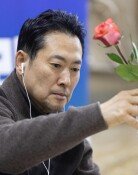Housing Development Size Limits Lifted
Housing Development Size Limits Lifted
Posted December. 02, 2005 07:02,
Starting as early as next year, large-scale housing development projects of more than 100,000 square meters will be allowed in seven areas designated for conservation of water quality of the Han River including Yangpyeong and Gapyeong.
Currently, housing developments of more than 60,000 square meters are illegal. And housing developments of more than 200,000 square meters are allowed only in Gwangju of Gyeonggi Province, which has introduced a Total Maximum Daily Load program (TDML program).
Moreover, the building of new plants will be allowed, and from 2006 to 2008, a new six million square meter industrial complex will be established in the metropolitan area.
In addition, three-year colleges of nursing can be transformed into four-year ones unless they increase their number of students. Universities located in Seoul can build branch schools in Northern Gyeonggi Province such as Yeonchun and Pocheon.
The Ministry of Construction and Transportation (MOCT) and the Korea Research Institute for Human Settlements announced a revised version of the third plan for development of the metropolitan area and the act on plan for development of the metropolitan area and revised enforcement ordinance yesterday.
The plan is a blueprint for the development of the metropolitan area from 2006 to 2020. After undergoing deliberation at a cabinet meeting and approval procedure at the National Assembly, the plan will be implemented in phases starting February 2006.
According to the plan, the MOCT has decided to keep the proportion of metropolitan population relative to the total population of Korea at 47.5% (2.375 million), which is similar to the level at end of 2004 (47.9%, 2.305 million).
The MOCT decided to establish its plans by district and allow large-scale housing developments in seven cities and counties including Yangpyeong, Gapyeong, Gwangju, Icheon, Yeoju and part of Ansung and Yongin of Gyeonggi province under the conditions of introducing the TDML program.
Jae-Seong Hwang jsonhng@donga.com






![[김순덕의 도발] ‘李부터 연임’ 개헌, 이 대통령은 가능성을 말했다](https://dimg.donga.com/c/138/175/90/1/wps/NEWS/IMAGE/2026/01/16/133172656.1.jpg)
